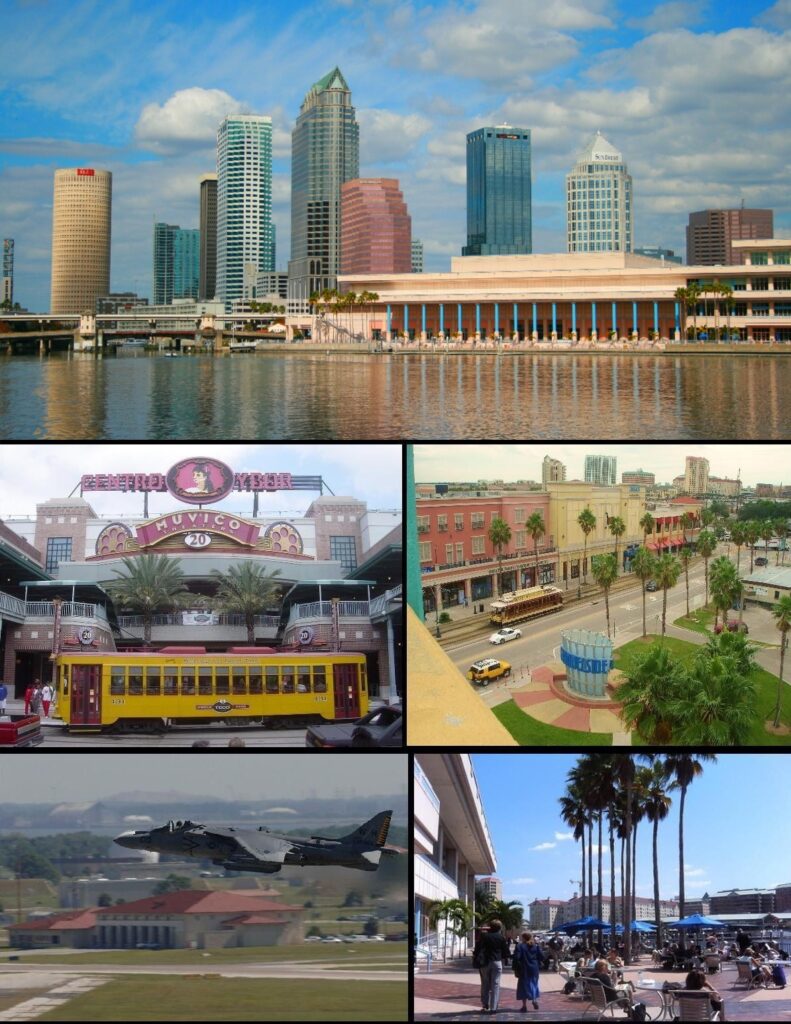
Moving to Tampa, Florida: A Comprehensive Relocation Guide
Considering moving to Tampa, Florida? This major Gulf Coast city offers booming economy, cultural attractions, and waterfront lifestyle. With approximately 410,000 residents in 2025 (metro 3.3 million+), Tampa combines urban energy with beach access and Florida’s fastest-growing metropolitan powerhouse.
Demographic Profile to Consider If Moving to Tampa:
Tampa’s 2025 population is approximately 410,000 within city limits, with the metro area exceeding 3.3 million residents. The median age is around 35 years, with young professionals, families, diverse residents, and students. The population is approximately 48% White, 26% Hispanic, 21% Black or African American. Tampa features distinct neighborhoods from historic Ybor City to revitalized downtown to Hyde Park’s upscale area to suburban developments throughout. The city’s rapid growth attracts transplants from across America seeking employment, warm climate, and quality of life. Tampa combines big-city opportunities with accessible lifestyle. The community balances urban development with neighborhood character and waterfront access. Find trusted local services for moving, living, and working in Tampa.Tampa Relocation Directory
Cost of Living to Consider If Moving to Tampa:
Tampa offers moderate housing costs for a major metro experiencing rapid growth. Median home values range from $360,000 to $520,000 in 2025, varying dramatically by neighborhood from affordable areas to luxury waterfront properties. The median household income is approximately $62,000. Rental properties average $1,800 to $2,800 monthly. Florida’s absence of state income tax attracts businesses and residents. Overall cost of living is competitive for a major metro, though rapidly rising with growth. Tampa attracts diverse income levels from service workers to technology professionals. Housing costs vary significantly from emerging neighborhoods to established areas. The combination of job opportunities, warm climate, and no state income tax drives demand and pricing. Tampa remains more affordable than Miami or coastal alternatives.
Economy and Job Market:
Tampa’s economy is booming and diverse, centered on finance, healthcare, technology, logistics, and tourism. Major employers include JPMorgan Chase, Raymond James Financial, BayCare Health System, Tampa General Hospital, Publix Super Markets, and MacDill Air Force Base. The Port of Tampa handles massive cargo. The technology sector explodes with startups and established companies. Healthcare institutions provide extensive employment. Tourism supports Busch Gardens, professional sports, and hospitality. The University of South Florida graduates talent feeding local industries. Professional services thrive. Typical industries include finance, healthcare, technology, logistics, and hospitality. The diverse economy provides opportunities across all sectors and skill levels. Tampa ranks among America’s fastest-growing job markets.
Education:
Hillsborough County Public Schools serves Tampa students, operating Florida’s third-largest district with numerous schools throughout the city. School quality varies dramatically, with magnet programs and highly-rated schools alongside struggling facilities requiring family research. The University of South Florida is a major research university offering comprehensive programs. The University of Tampa provides private education. Hillsborough Community College offers associate degrees. The concentration of universities creates an academic presence. Educational quality requires research due to district size and variability.
Recreation and Lifestyle:
Tampa offers extensive attractions including Busch Gardens theme park, ZooTampa, and the Florida Aquarium. Professional sports include Tampa Bay Buccaneers (NFL), Tampa Bay Lightning (NHL Stanley Cup champions), Tampa Bay Rays (MLB), and Tampa Bay Rowdies (USL). The revitalized Riverwalk connects downtown attractions along the Hillsborough River. Historic Ybor City offers nightlife, restaurants, and Cuban heritage. Hyde Park features upscale shopping and dining. Nearby beaches include Clearwater Beach and St. Pete Beach within 30-40 minutes. The Tampa Riverwalk provides recreation paths. Residents enjoy boating on Tampa Bay, diverse dining, arts venues, and year-round outdoor activities. The subtropical climate enables perpetual summer. The lifestyle combines urban amenities with beach access and sports passion. The community values growth, diversity, and opportunity.
Healthcare and Services:
Tampa residents access world-class healthcare through Tampa General Hospital, BayCare facilities, AdventHealth, and Moffitt Cancer Center. The region’s healthcare infrastructure is extensive with specialized care in all disciplines. Multiple hospitals and medical facilities throughout the metro ensure quality healthcare access.
Transportation:
Tampa benefits from Interstate 275, Interstate 75, Interstate 4, and various expressways. Tampa International Airport is a major hub consistently ranked among America’s best. Hillsborough Area Regional Transit (HART) operates bus service. The TECO Line Streetcar serves downtown and Ybor City. Traffic congestion increases with growth. Downtown and some neighborhoods offer walkability. Most residents use personal vehicles. Typical commute times range 30-50 minutes.
Conclusion:
Moving to Tampa in 2025 offers major metro living with booming economy, championship sports, and Gulf Coast access. The city’s combination of job opportunities, Bucs/Lightning success, cultural attractions, and year-round warmth makes it ideal for young professionals, families, and transplants seeking Florida’s fastest-growing powerhouse where opportunity meets lifestyle and urban energy combines with accessible beaches in America’s hottest relocation destination.

